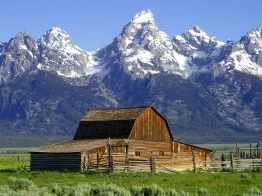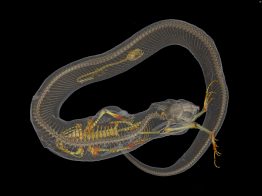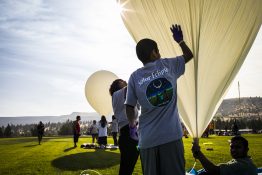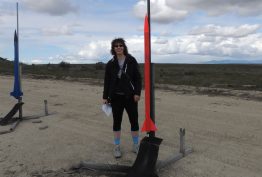The Northern Rocky Mountain ecosystem includes huge swaths of federal lands, two national parks and some of the most spectacular wild spaces in the country. University of Washington researchers are helping managers of those lands prepare for a shifting climate. “Climate Change and Rocky Mountain Ecosystems,” a book published in August, was edited by Jessica Halofsky, a UW research ecologist in the School of Environmental and Forest Sciences, and David Peterson, a senior research biologist with the U.S.
Read the UW Today Q&A »Record-low 2016 Antarctic sea ice due to ‘perfect storm’ of tropical, polar conditions
While winter sea ice in the Arctic is declining so dramatically that ships can now navigate those waters without any icebreaker escort, the scene in the Southern Hemisphere is much different. Sea ice around Antarctica has actually increased slightly during winter — until last year. About a year ago, a dramatic drop in Antarctic sea ice during spring in the Southern Hemisphere brought its maximum area to its lowest level in 40 years of record keeping.
Read more at UW Today »Scientists to create digital encyclopedia of 3-D vertebrate specimens
A team of University of Washington scientists is partnering with more than a dozen other institutions — with funding from National Science Foundation — to create a digital encyclopedia of 3-D vertebrate specimens.
Read more at UW Today »Native American youth launch high-altitude balloons for unique perspective on solar eclipse
UW-led project hopes to inspire students' interest in science during the solar eclipse.
Read more at UW Today »Total Solar Eclipse Q&A with Earth and Space Sciences' Erika Harnett
The UW Department of Earth and Space Sciences’ Erika Harnett is a geophysicist who studies weather in space. She looks at how solar wind interacts with weakly magnetized planets, like the Moon or Mars. Among other things, Erika is also the is the Associate Director of the Washington NASA Space Grant Consortium. She’ll be in eastern Oregon for the upcoming Total Solar Eclipse on August 21, and in advance of the once-in-a-lifetime solar event, we caught up with her.
Read more »





